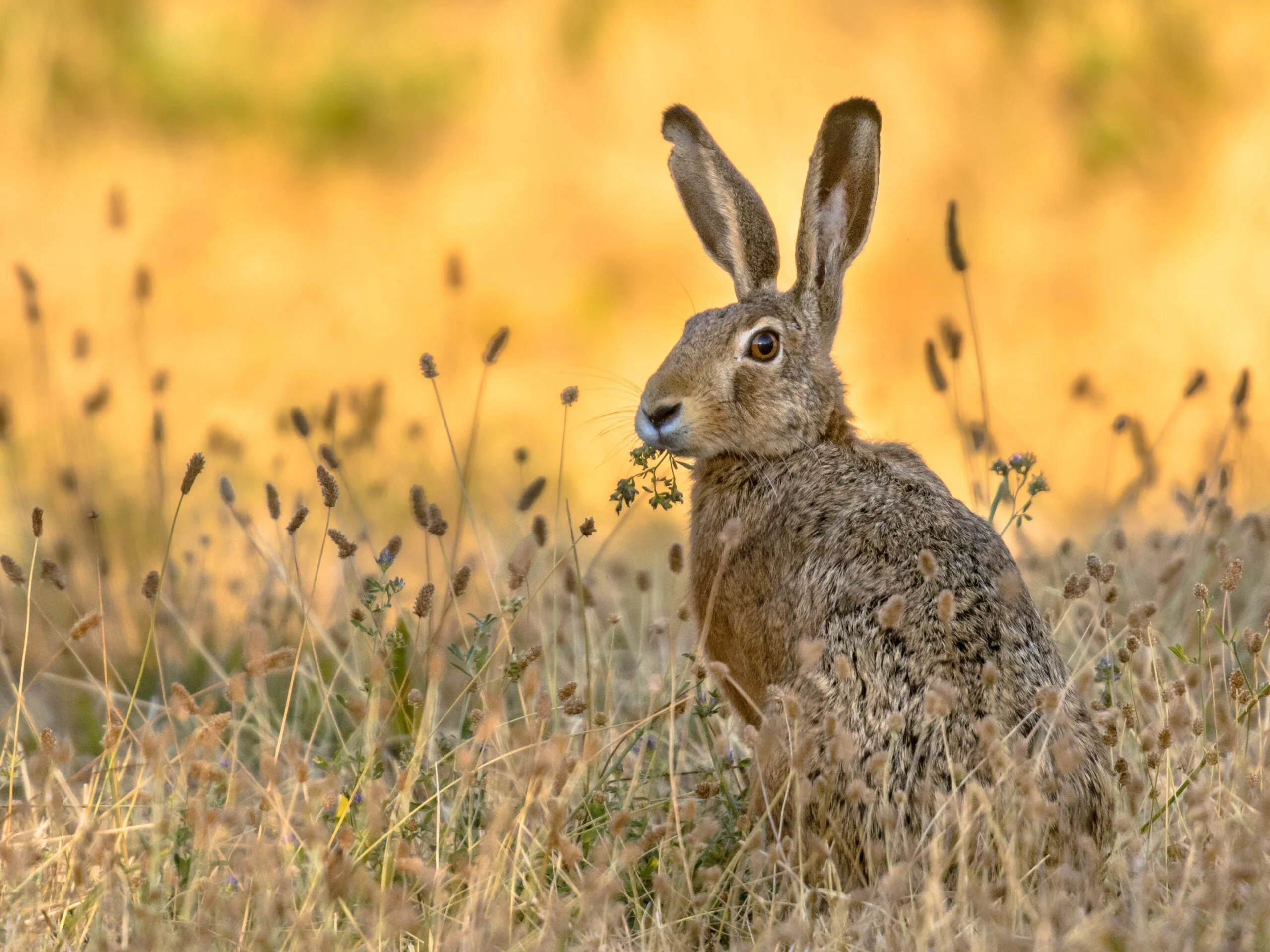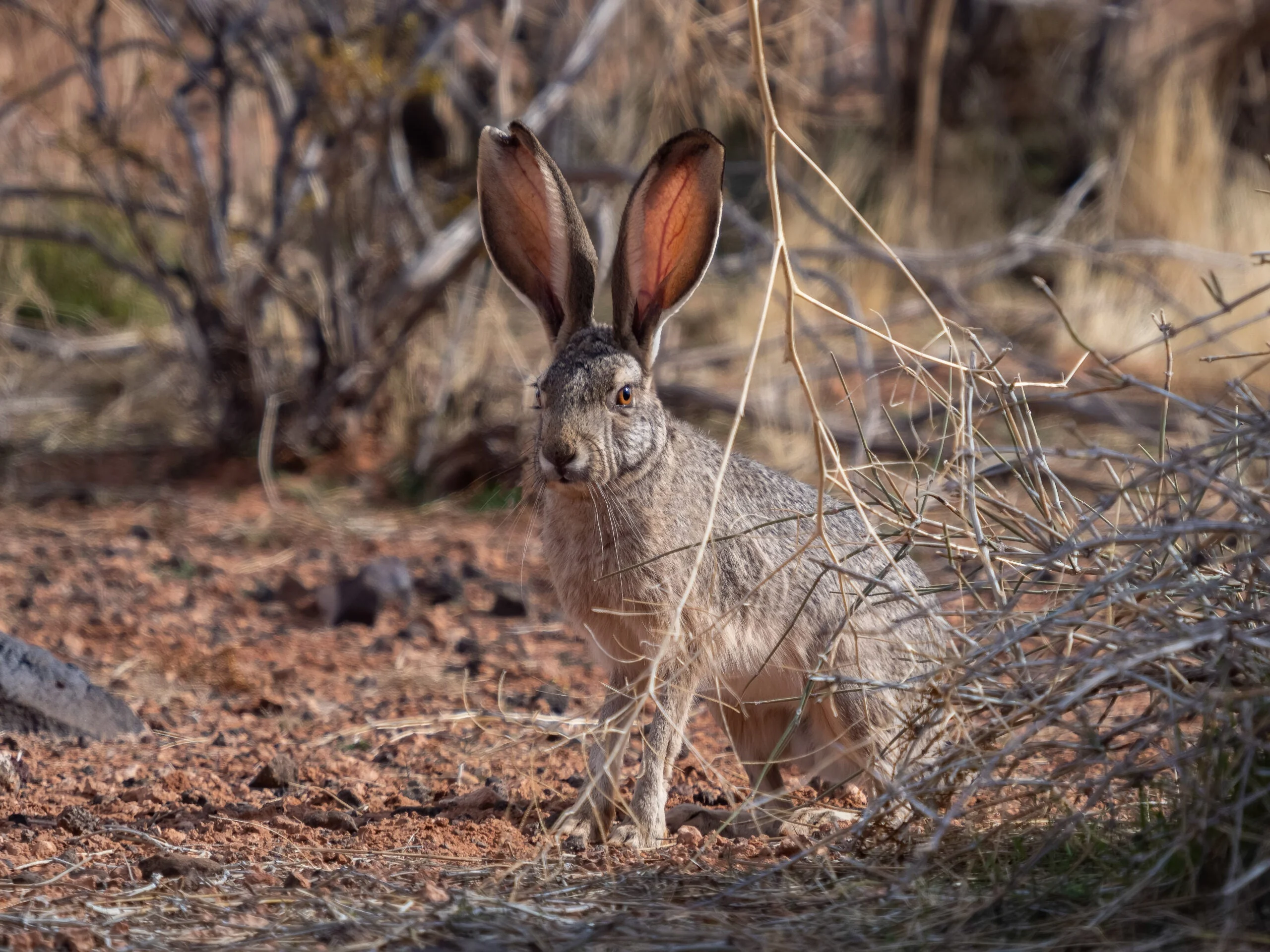When hunting seasons come to a close, many sportsmen pivot to the water, exchanging their firearms and archery tackle for fishing rods and reels. But if you live in the West
, there’s no need for a hunting break—there’s a tasty small game species you should be chasing. That’s the long-slandered, hoppy critter known as the jackrabbit.
In most western states, jacks can be hunted year-round without bag limits. The Forest Service and BLM lands provide ample hunting opportunities.
Now, I realize you’re probably thinking, “You’re mistaken, Chris. My [insert wise old hunting buddy here] told me jackrabbits taste like shoe leather. Why on earth would I hunt them?”
Because your buddy is wrong. Jacks make for an incredibly fun and challenging hunt and make for fantastic table fare.
What exactly is a jackrabbit?

Jackrabbits have a range
that almost forms a large square across the western and central United States—from Oregon down to Southern California, then east through Texas and north again until North Dakota and back to Oregon. Adobe Stock / creativenature.nl
Jackrabbits are actually hares, meaning they’re born with fur and open eyes. They’re giants in comparison to the dainty cottontail, as they can officially weigh up to around 10 pounds (I’d argue larger) and grow to 2 feet in length depending on the exact subspecies. On a day when I take home both species, I find one jack equates to three or four cottontails in terms of meat.
Where to find them?
Jackrabbits have a range that almost forms a large square across the western and central United States—from Oregon down to Southern California, then east through Texas and north again until North Dakota and back to Oregon. The northern half of this zone is mostly home to white-tailed jackrabbits, while the black-tailed and antelope subspecies hail from the southern portion.
Within this area, jackrabbits are generally found year-round in desert scrubland, plains, farmland, and dunes. But that doesn’t mean you should look for the same low brush where’d you jump cottontails. Jacks evade predators with their lightning-fast speed so they need more room to run.
Look for areas where 25- to 50-percent of the land is covered by scrub brush and chaparral at least 3 feet high. The flora needs to be tall enough for the large rabbits to hide beneath while also containing enough open space between bushes for the animal to sprint away when in danger. I find most of my success in a few types of spots.
Rollings plains marked with chaparral: Drive the plains, looking for pockets of chaparral. Jacks will almost always reside in the area. This terrain is often the easiest to hunt them. The rabbits here tend to be like the rolling plains — more relaxed and forgiving.
Open valleys containing scrub brush: Find valleys bordered by steep cliffs. If the valley floor is marked with scrub brush tall enough for jacks to hide, they’ll be feeding between bushes at first and last light.
Valley hillsides and narrow washes: Later in the mornings, jacks will move from the valley floor and bed beneath bushes on surrounding hillsides. They seem to like being able to bust up over the hill or down into the valley at any sign of trouble. Occasionally, I also find them bedded mid-day in craggy nooks at the bottom of washes.
What do I need to hunt jackrabbits?
A game vest. Hopefully a good one at that. You’ll likely be hiking out with 20-30 pounds of bunny on you.
Lots of water. Hunting them often requires a good bit of hiking. Learning how to hunt jackrabbits often begins with learning how to push yourself.
Your weapon of choice and plenty of ammo.
Shotgun
A 12-gauge is optimal, but a 20-gauge is plenty when first learning how to hunt jackrabbits. Whereas delicate cottontails are liable to die if you yelled at them, jackrabbits take hits like Floyd Mayweather. I prefer larger shot sizes for more knockdown power—mostly No. 4 steel shot with 3-inch shells. Smaller sizes often require a follow-up shot which means bloodshot, BB-filled meat. I almost always use a modified choke.
Small-caliber rifle
A .22 LR or .17 HMR is plenty of gun to make an ethical kill inside of 100 yards. Any load in either caliber will do.
Bow
Break out the bow if you really want a challenge. I’ve tried it unsuccessfully, but it was wildly fun. Judo tips or retired broadheads inside of 40 yards should do the trick if you manage to connect.
How to hunt jackrabbits

Once the sun is high overhead, jacks will bed down underneath the chaparral. Adobe Stock / Dee Carpenter
Hillside sharpshooting in the morning and evening: Like most animals, jackrabbits are mostly crepuscular, meaning they’re most active at night. That said, you can catch them feeding in the early morning hours if you sneak onto the hillside quietly enough. Find a good glassing spot over a valley and watch for movement. Then put your sniping to the test.
Stalk them in the morning and evening: Trade out the rifle for a shotgun (or bow), and spot and stalk jacks in the mornings and evenings when they’re moving. This is my favorite way to pursue them. Make sure to walk slowly and quietly. You’ll only get one freebie. If a jack hears you, it’ll pop its ears up like a Hershey Easter Bunny. And if you make another sound before it relaxes, you’ll see a colossal rabbit’s ass burning your gun’s effective range. It’s like watching a furry stone skip across a chaparral pond.
Jump them midday: Once the sun is high overhead, jacks will bed down underneath the chaparral. Grab your shotgun, and take a stroll through their habitat. Walk a few steps, then stop for a couple seconds. Like cottontails, jacks tend to bust on the pause. Be ready to get a quick shot off.
How to cook jackrabbits
There’s no denying that jackrabbit meat catches a bad rap among hunters. I’ve come to realize many hunters are probably just bad cooks.
Unlike the white-meat cottontail, jacks have dark red flesh closer to venison. To cook a jackrabbit, simply braise it with garlic, onions, broth, salt, and pepper until the meat pulls apart from the bone. When deciding what to make, I have one rule to keep in mind: If it tastes good with beef, it will taste good with hare.
I’ve made jackrabbits into gumbo, barbecue beef, ragu, barbacoa, stew, and sausages. I have a friend who makes smoked jackrabbit ravioli with a mustard cream sauce. Another buddy makes them into pot pies and stroganoff.
“Don’t be afraid,” says Chef David Codney, director of culinary at the Los Angeles-based restaurant group Belmore. “Jacks taste great.”
Lingering Thoughts on How to Hunt Jackrabbits
Not all jackrabbits behave the same. I’ve hunted some that are so anxious and jumpy they seem nearly impossible to catch. I’ve also seen others that refuse to bust even though I’m looking at them in the sagebrush 3 yards away.
Jackrabbits don’t burrow. They rest in shallow dugouts called “forms.” So, if you see one take shelter in the chaparral, don’t give up thinking it’s gone subterranean like a cottontail. It’s still there.
Jacks follow each other’s lead. If one busts, another often runs simultaneously—sometimes closer to you than the first. Be ready to shift targets.
Jacks don’t circle around like spooked cottontails—at least not immediately. While they may eventually return to their starting point, these athletic critters can run for miles.
Jacks can clock speeds up to 45 miles per hour. If one takes off over a hill, don’t bother going after it unless you just want exercise. It’ll keep burning you. If you saw one, there are more around.

